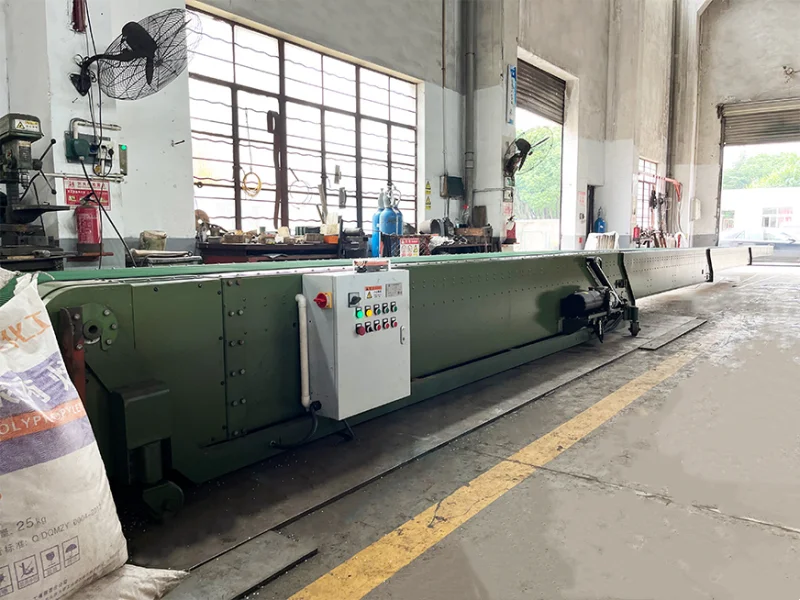
Conveyors for Automated Production Line
As industrial production continues to develop, automation technology has become pivotal on production lines. Conveyors, as an essential part of modern automated production lines, play a crucial role in connecting various stages of production. Their efficient operation and seamless integration with automated systems provide companies with numerous advantages.
Conveyors for Automation Production Line
First, the use of conveyors greatly improves production efficiency. Traditional manual handling is not only time-consuming and labor-intensive but also prone to operational errors and workplace injuries. Conveyors enable continuous material transport, significantly reducing downtime in the production process. With the stability and precision of conveyors, their operational speed can be effectively controlled, optimizing production efficiency.
Second, the close integration of conveyors with automated production lines makes the production process more intelligent. Through coordination with automated equipment, conveyors can start and stop automatically and adjust their speed precisely to match the production rhythm. Conveyors can also synchronize with other equipment to connect upstream and downstream processes on the production line. This intelligent collaboration not only increases the efficiency of the production line but also reduces the likelihood of human error, minimizing operational risks.
Additionally, the seamless integration of conveyors enhances the flexibility of production lines. Process parameters on the production line may need to be adjusted based on factors like product type, specifications, or order requirements. In such cases, conveyors can adapt to different production needs by adjusting the position, speed, and angle of the conveyor belt. This adaptability enables companies to respond quickly to market demands, flexibly adjusting production plans and enhancing the adaptability of the production line.
Moreover, the integration of conveyors with automated production lines plays a key role in ensuring product quality consistency. The operational stability and accuracy of conveyors help ensure uniform quality distribution during production. Automated conveyor operation also minimizes the influence of human factors on product quality, reducing potential defects and losses.
To achieve seamless integration between conveyors and automated production lines, companies should focus on several key points. First, thorough planning and design are essential to ensure that the layout of conveyors and production lines is logical and takes into account both operational efficiency and production capacity. Second, choosing the right type of conveyor is crucial. The choice should be based on product characteristics and process requirements, ensuring smooth coordination with automated equipment. Lastly, consistent maintenance is vital to ensure that conveyors run smoothly and to detect and address potential issues promptly.
Common Conveyors for Sale
1. Belt Conveyor
- Features: Belt conveyors use a continuously moving belt to transport materials to a designated location. They are suitable for light and medium-duty materials and widely used in various production lines.
- Advantages: Smooth operation, easy maintenance, suitable for long-distance transport, and adaptable to various material shapes and sizes.
- Applications: Ideal for electronics assembly lines, food processing lines, and more.
2. Roller Conveyor
- Features: Roller conveyors consist of a series of rollers that allow materials to roll along the surface. They can be powered or non-powered and are commonly used for transporting heavier items.
- Advantages: High load capacity, suitable for short-distance transport, flexible installation, and can connect with other equipment.
- Applications: Widely used in logistics sorting systems, warehousing systems, and packaging lines.
3. Flexible Conveyor
- Features: Flexible conveyors enable adaptable transport paths, including straight, curved, and inclined routes, suitable for customized needs.
- Advantages: Highly adaptable, easy to adjust layouts, and compatible with various automated equipment.
- Applications: Used in multi-variety, small-batch production lines, such as in electronics manufacturing and packaging industries.
The seamless integration of conveyors and automated production lines not only boosts production efficiency and enables intelligent, flexible manufacturing but also stabilizes product quality and reduces production costs. As a critical component of a company's journey toward smart manufacturing, the proper use of conveyors can deliver substantial commercial value. In the near future, the close connection between conveyors and automated production lines is likely to become the mainstream trend in industrial production.


Leave Me Your Requirement!